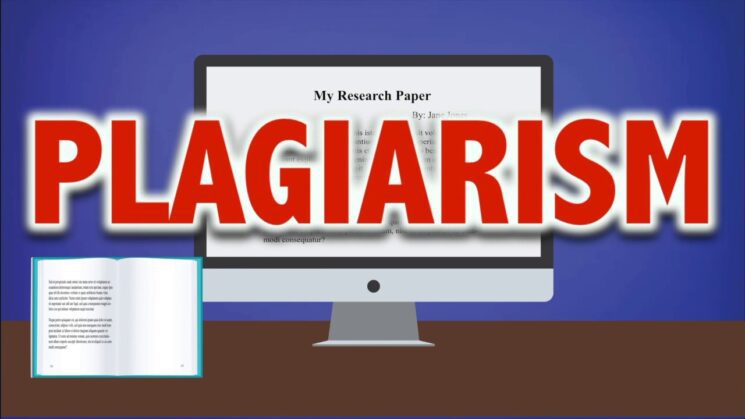Welcome to “Mastering the Art of Citation: A Guide to Properly Citing Sources in Essay Writing”! If you’re a student, researcher, or academic writer, you’re likely familiar with the importance of properly citing sources in your work. But even if you know that citations are necessary, you may not understand exactly why they matter so much.
The truth is that citations play a crucial role in enhancing the credibility of your writing and avoiding plagiarism. They give credit where credit is due, allowing readers to trace your sources and verify your claims. Without citations, your work can come across as unoriginal or unreliable, leading to lower grades, rejection from journals, or damage to your professional reputation.
This guide aims to demystify the art of citation and equip you with the knowledge and skills to cite sources properly in your essays. We’ll cover everything from understanding citations and choosing the right citation style to in-text and bibliographic citations, avoiding plagiarism, and best practices for effective citation. By the end of this article, you’ll be well on your way to mastering the art of citation and elevating the quality of your academic writing. So let’s dive in!
In This Post
Understanding Citations

When it comes to academic writing, citations are like the shining knights that defend the fortress of scholarly integrity. But what exactly are citations, and why do they hold such importance? Well, my friend, citations are essentially the roadmap that guides your readers to the sources you’ve used to build your argument. They serve as signposts of credibility, showcasing the extensive research and knowledge you’ve gathered to support your ideas. So, the next time you find yourself thinking, “Who can write my essay?”, whether it’s for a complex research paper or a thought-provoking essay, remember that citations are your allies in bolstering your academic prowess. Many essay writing services are available to help you with your writing needs, but understanding the art of citation is key to crafting a well-cited and coherent essay.
Now, let’s talk about citation styles. Just as the world of fashion has its diverse array of styles and trends, the academic realm has its own collection of citation styles to choose from. The most popular ones include APA (American Psychological Association), MLA (Modern Language Association), and Chicago style. Each style has its own set of rules and conventions, governing the formatting and organization of citations. It’s important to familiarize yourself with the specific requirements of your chosen citation style, as they can vary in terms of punctuation, capitalization, and even the order in which information is presented.
When it comes to citing sources, each component of a citation serves as a building block that helps create a reference that leaves no room for ambiguity. The author’s name, title of the source, publication date, and other pertinent details work together to form a citation that accurately and precisely credits the original source. Whether you’re citing a journal article, website, or book, each type of source has its unique formatting guidelines. Understanding these guidelines is essential for properly citing your sources and avoiding plagiarism. In-text citations, which are brief references within your essay, point readers to the full bibliographic citation in your reference list. On the other hand, bibliographic citations provide all the necessary information for readers to locate the exact source you’ve used when reading books. Knowing the difference between these two types of citations is vital for crafting a well-cited and coherent essay.
So, my fellow knowledge seeker, now that we’ve delved into the realm of understanding citations, you’re one step closer to mastering the art of citation. Stay with us as we embark on a journey to explore different citation styles, unravel the secrets of proper in-text and bibliographic citations, and unveil the techniques to avoid the treacherous pitfalls of plagiarism.
Choosing the Right Citation Style

Choosing the right one can sometimes feel like picking out an outfit for a special occasion. But fear not, dear writer, for I shall be your style advisor in this citation fashion dilemma. When selecting a citation style, there are a few factors to consider. Firstly, think about the discipline or field you’re writing in. Different academic disciplines often have preferred citation styles that align with their conventions and standards. For example, APA (American Psychological Association) is commonly used in the social sciences, while MLA (Modern Language Association) finds its home in the humanities. So, before embarking on your citation journey, take a moment to consult your professor or refer to guidelines specific to your field.
Now, let’s explore the vibrant universe of commonly used citation styles. It’s like a bustling marketplace where each style showcases its distinct flair. APA, with its precise formatting and emphasis on dates and authorship, appeals to the organized minds of psychologists and social scientists. MLA, on the other hand, exudes a poetic charm, with its focus on literary sources and elegant parenthetical citations. And let’s not forget the scholarly sophistication of Chicago style, adored by historians and those in the humanities for its thorough bibliographic references. These are just a few examples among many, each with its own unique flavor and purpose.
But fret not, my friend, for in this vast world of citation styles, you are not alone. Resources and guides abound to assist you on your citation quest. Numerous online platforms, style manuals, and university writing centers offer comprehensive guides on each citation style. They provide detailed explanations, examples, and tips to ensure that you understand the intricacies of your chosen style. Take advantage of these resources, and you’ll navigate the labyrinth of citations with grace and finesse.
Finally, as you embark on your writing journey, always remember to adhere to the specific citation requirements from your instructors or the journals you plan to submit to. They might have their own preferred variations or additional guidelines for a particular citation style. Paying attention to these details will not only demonstrate your attention to detail but also ensure that your work aligns with the specific expectations of your audience.
Bibliographic Citations: Creating a Comprehensive Reference List
Just like assembling the pieces of a puzzle, bibliographic citations provide the final touch to your essay, completing the mosaic of scholarly attribution. To ensure your reference list shines with perfection, let’s delve into the world of formatting guidelines. Each citation style has its own specific rules for formatting bibliographic citations. Pay attention to details such as indentation, punctuation, and capitalization. Whether you’re listing books, articles, websites, or other common sources, following the prescribed formatting guidelines ensures consistency and allows your readers to effortlessly locate the sources you’ve drawn upon.
Now, let’s explore the diverse array of sources that deserve a place in your reference list. From the weighty tomes that grace library shelves to the digital landscapes of websites and online articles, each source requires its own citation treatment. When citing books, include the author’s name, title, publication date, publisher, and any additional information specified by your chosen citation style. For articles, note the author, article title, journal name, volume, issue, page numbers, and publication date. Websites demand a different set of elements, such as the author (if available), webpage title, website name, URL, and access date. Remember, dear writer, to adapt your citation style to suit the specific source type, ensuring accuracy and completeness.
Supplementary information adds an extra layer of depth and precision to your bibliographic citations. If you’re citing a book from a specific edition, be sure to include the edition number. For journals, mention the volume and issue numbers. Page numbers play a crucial role in pinpointing the exact location of your references within the source. Including these supplementary details demonstrates your meticulousness and attention to detail.
Avoiding Plagiarism: The Ethical Imperative

In academic writing, plagiarism is a serious offense that can have severe consequences. Plagiarism occurs when someone uses someone else’s work or ideas without giving proper credit. It not only violates academic integrity but also undermines the credibility of the writer and their work. To avoid plagiarism, it is essential to understand the concept and its consequences.
Plagiarism can result in various punishments, ranging from failing a course or an assignment to suspension or even expulsion from school. It can also damage a writer’s reputation and future career prospects. Therefore, it is crucial to take steps to avoid plagiarism, both intentional and unintentional. Strategies for avoiding plagiarism include properly citing sources, paraphrasing effectively, and using plagiarism detection software to check for similarities with other works. Additionally, it is vital to understand the nuances of citation styles and formatting guidelines to ensure that all sources are accurately and correctly cited.
Conclusion
As we bring our journey through the art of citation to a close, let’s take a moment to reflect on the significance of proper citation in essay writing. We’ve explored the vital role that citations play in enhancing the credibility of our work, avoiding plagiarism, and showcasing our diligent research efforts. Remember, dear writer, that citations are not mere formalities, but rather the pillars that support the foundation of your academic integrity.
Throughout this guide, we’ve uncovered key insights and strategies to help you master the art of citation. We’ve learned about understanding citations, choosing the right citation style, creating a comprehensive reference list, and the ethical imperative of avoiding plagiarism. Embrace these lessons as valuable tools in your scholarly arsenal.